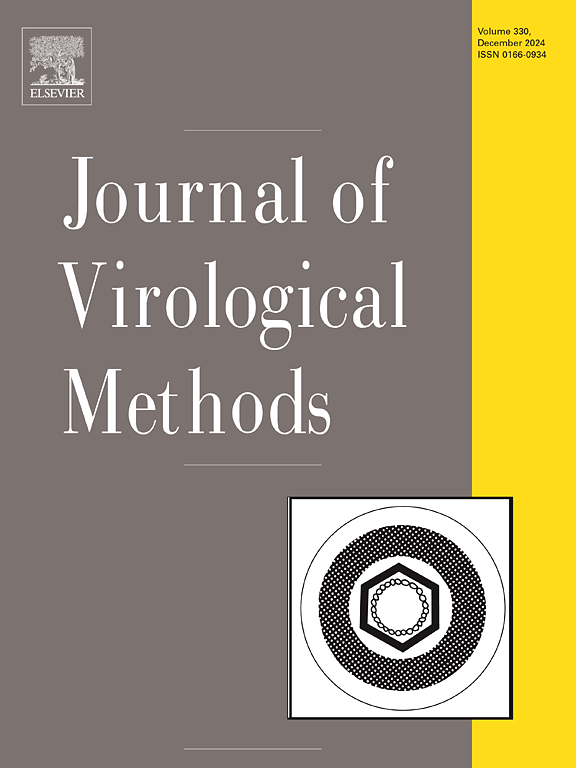Impedance-based method for the quantification of infectious SARS-CoV-2
IF 2.2
4区 医学
Q3 BIOCHEMICAL RESEARCH METHODS
引用次数: 0
Abstract
Severe acute respiratory syndrome coronavirus 2 (SARS-CoV-2) is the etiologic agent involved in the coronavirus disease 2019 (COVID-19) pandemic. The development of infectious titration methods is crucial to provide data for a better understanding of transmission routes, as well as to validate the efficacy of inactivation treatments. Nevertheless, the low-throughput analytical capacity of traditional methods may be a limiting factor for a large screening of samples.
The aim of the study was to develop a Real-Time Cell Analysis (RTCA) assay based on the measurement of cell impedance to quantify infectious SARS-CoV-2. The kinetics of cell impedance showed a virus-specific Cell Index (CI) drop. This enabled the correlation between viral concentrations and time at which a 50 % drop in CI values was observed (tCI50), with establishment of a standard curve. In parallel, the improved Spearman and Kärber method was used to quantify infectious titer since the virus-induced CI drop is correlated to the Cytopathic Effect. The estimated uncertainty was respectively 0.57, 0.36, and 0.26 log10 with 4, 8, and 16 wells per dilution.
Thus, the RTCA assay is a powerful tool with a greatly simplified workflow for effective risk assessment in the field of food and environmental virology.
基于阻抗的传染性SARS-CoV-2定量方法
严重急性呼吸综合征冠状病毒2型(SARS-CoV-2)是2019年冠状病毒病(COVID-19)大流行的病原。发展感染滴定方法对于提供数据以更好地了解传播途径以及验证灭活治疗的有效性至关重要。然而,传统方法的低通量分析能力可能是大量筛选样品的限制因素。该研究的目的是开发一种基于细胞阻抗测量的实时细胞分析(RTCA)方法,以量化传染性SARS-CoV-2。细胞阻抗动力学显示病毒特异性细胞指数(CI)下降。这使得病毒浓度与观察到CI值下降50%的时间(tCI50)之间存在相关性,并建立了标准曲线。同时,由于病毒诱导的CI下降与细胞病变效应相关,因此采用改进的Spearman和Kärber方法定量感染滴度。每次稀释4、8和16个孔时,估计不确定度分别为0.57、0.36和0.26 log10。因此,在食品和环境病毒学领域,RTCA检测是一个强大的工具,它大大简化了工作流程,可以进行有效的风险评估。
本文章由计算机程序翻译,如有差异,请以英文原文为准。
求助全文
约1分钟内获得全文
求助全文
来源期刊
CiteScore
5.80
自引率
0.00%
发文量
209
审稿时长
41 days
期刊介绍:
The Journal of Virological Methods focuses on original, high quality research papers that describe novel and comprehensively tested methods which enhance human, animal, plant, bacterial or environmental virology and prions research and discovery.
The methods may include, but not limited to, the study of:
Viral components and morphology-
Virus isolation, propagation and development of viral vectors-
Viral pathogenesis, oncogenesis, vaccines and antivirals-
Virus replication, host-pathogen interactions and responses-
Virus transmission, prevention, control and treatment-
Viral metagenomics and virome-
Virus ecology, adaption and evolution-
Applied virology such as nanotechnology-
Viral diagnosis with novelty and comprehensive evaluation.
We seek articles, systematic reviews, meta-analyses and laboratory protocols that include comprehensive technical details with statistical confirmations that provide validations against current best practice, international standards or quality assurance programs and which advance knowledge in virology leading to improved medical, veterinary or agricultural practices and management.

 求助内容:
求助内容: 应助结果提醒方式:
应助结果提醒方式:


